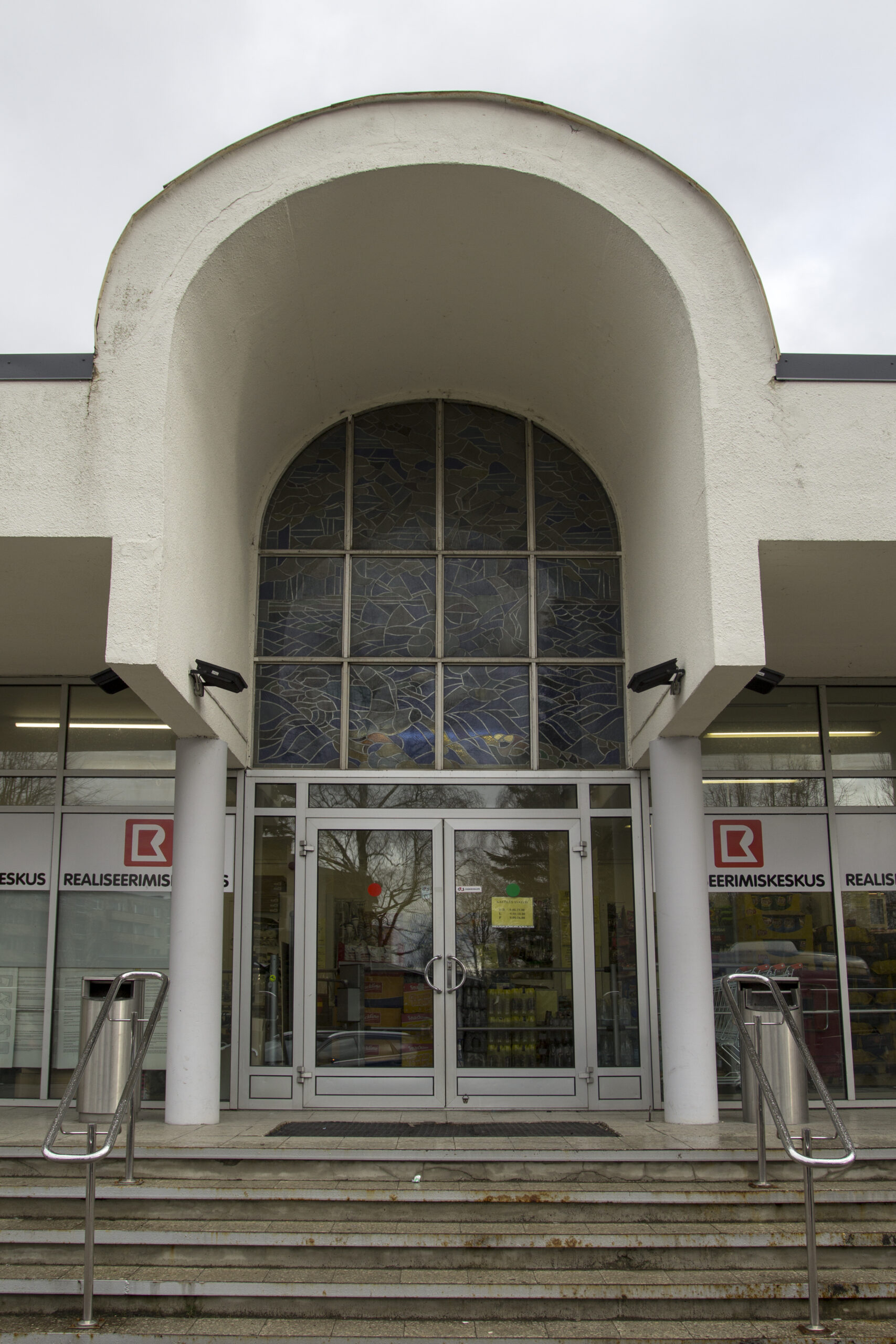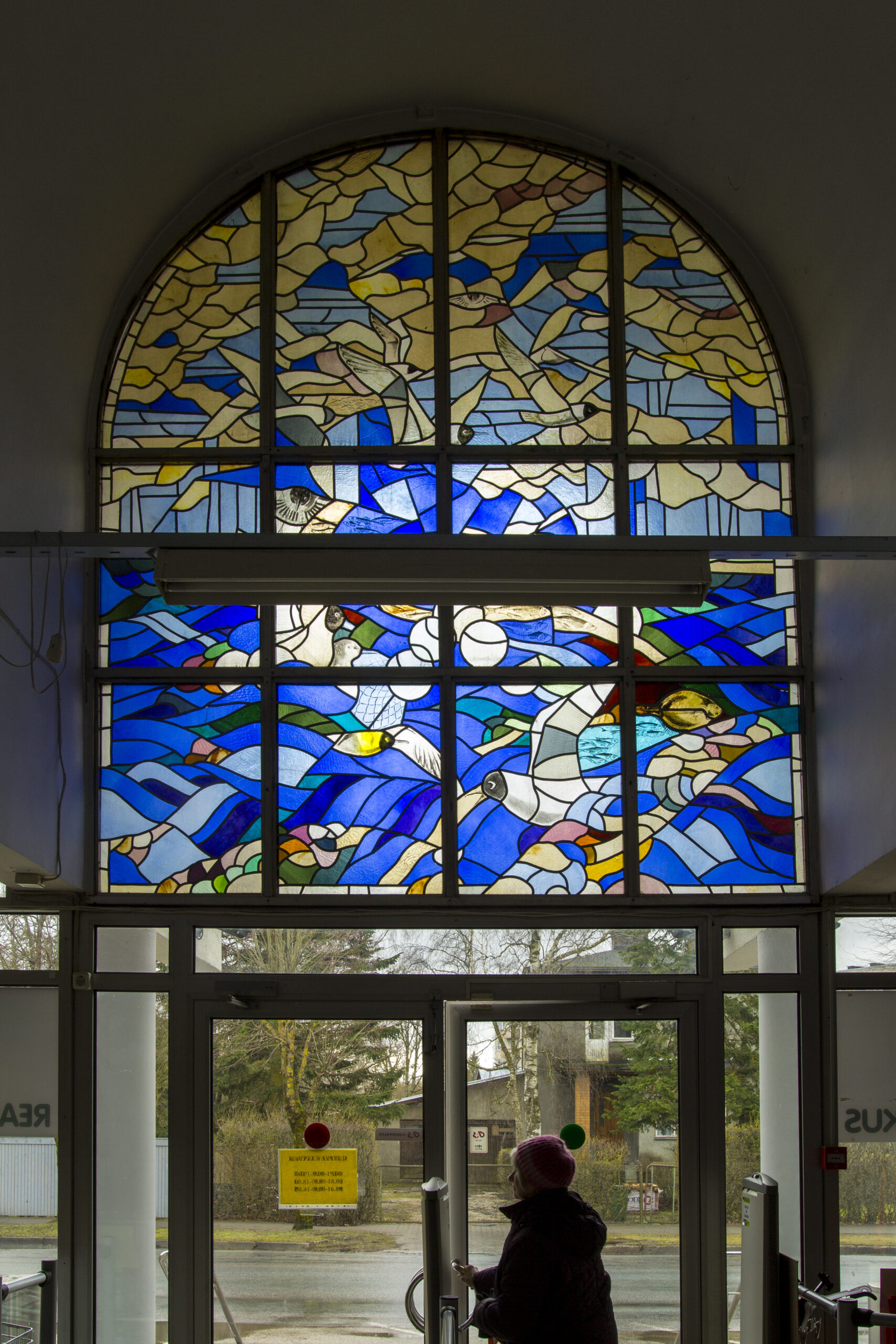Stained Glass Window at the Lääne Kalur Representative Shop in Haapsalu
Year of completion: 1984
Address: Lääne County, Haapsalu, Jaama 11
Author Üüve Vahur (Veski)
Soldered stained glass
ca 380 x 300 cm
Not under conservation as a cultural monument
The 1980s is seemingly one the golden eras of art created in public space by students of the Estonian Academy of Art. Dolores Hoffman, head of monumental painting studies in the academy, had managed to popularise monumental painting among nearly a third of students studying painting. A number of them, for example Kai Kaljo, created a large-scale monumental painting as their final project (frescoes in Abja Cultural Centre, still in great condition today). In some exceptional cases, large commissions were received even earlier: for example Valev Sein’s large stained-glass window for the Children’s Polyclinic on Rahu St. in Tallinn (1987, still in its original spot). The main techniques used for large projects outside of school were fresco and stained glass, although other traditional techniques of monumental painting such as mosaic and sgraffito were practised in learning assignments as well. Out of the nearly 50 student projects created in public space by painting students in the 1970s-1980s, only around twenty have survived, among them Üüve Vahur’s final project – the stained-glass window on the clerestory of a shop’s main entrance in Haapsalu.
Usually the monumental painting’s designer has to take into account the already existing room, but this time the graduate could easily begin work because architect Ell Väärtnõu, creator of numerous significant works in the Estonian architecture scene, had already planned the location for a stained-glass window in his design. The shop, designed while working at the design institute EKE Projekt into the architect’s former home-town Haapsalu, was to carry the representative function of the collective farm in addition to being the Lääne Kaluri company shop. The small capacity (152 m2) and well-proportioned one storey building enriches the streets of Haapsalu, and its essence has been compared to that of Haapsalu’s historical resort buildings.
Although the building was completed in 1981, it obtained the stained-glass window three years later. The central position on the arched clerestory above the main entrance makes the image of the sea in blue and white tones visually dominate in the building. In the centre of the dynamic composition are round net buoys, and seagulls circling around over the waves. In the part displaying the sea and the sky, the circling seagulls intermingle with the abstract rhythms of waves and clouds. Stained glass techniques inherently favour generalisations, and the author has only found it necessary to use glass painting, which allows for more detail, in a small number of places.
The stained-glass window is in good condition, and most likely will not raise questions about relevancy in the case of the building’s use changing in the future, with its timeless thematic choices that perfectly fit a seaside town. The building with its stained glass window has been listed in the National Register of Cultural Monuments under the XX Century Architecture rubric (no. 451).
Reeli Kõiv








